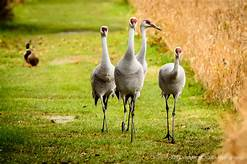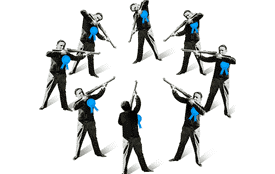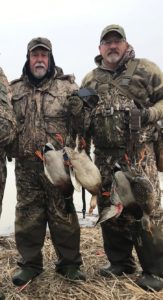 By Bruce Ross, Executive Director bruceross@wi.rr.com
By Bruce Ross, Executive Director bruceross@wi.rr.com
This article originally appeared in Wisconsin Waterfowl Association’s July, 2021 Newsletter edition.
 Last month’s sandhill crane article raised the ire of one of my neighbors who gets our newsletter. And he let me know it. He’s an ardent conservationist who has invested time, money, and energy into his 22 acres, and it shows. It’s an oasis of nature in a semi-rural/agricultural suburb of Milwaukee that demonstrates a remarkable commitment to applying his growing knowledge to the land.
Last month’s sandhill crane article raised the ire of one of my neighbors who gets our newsletter. And he let me know it. He’s an ardent conservationist who has invested time, money, and energy into his 22 acres, and it shows. It’s an oasis of nature in a semi-rural/agricultural suburb of Milwaukee that demonstrates a remarkable commitment to applying his growing knowledge to the land.
He was concerned that a sandhill crane hunt means he won’t see those lovely birds on his property anymore. He believes hunters are just looking for another target, not hunting for subsistence as they once did.
As easy as it might be to dismiss such anti-hunting concerns, there’s value in looking past such conflict flash points to find common conservation ground. That’s not to say that he’s right. We simply have to understand such reservations and address them squarely. Especially if the numbers of hunters continue to shrink in this nation, developing the skill of having a civil dialogue with non-hunters, and even anti-hunters, may be important to achieving our goals. If we can find some common ground, maybe we can find shared solutions that benefit our planet as well as our hunting passion.
Fortunately, the past century of conservation results have been largely (but not exclusively) driven by anglers and hunters. This gives us some pretty good bone fides from which to engage in that discussion.
 It’s clear that the North American Conservation Model, based on user fees paid by hunters and fishermen, has been the conservation funding engine in this country. It has resulted in some of the best ecological outcomes in the world today. Billions of dollars raised through Pittman-Robertson and Dingell-Johnson taxes and similar excise taxes on equipment, hunting and angling licenses, and other user fees borne by hunters and anglers far outweigh the other sources of conservation funding. Our own efforts to raise the duck stamp fee – on ourselves – is a prime example of hunters’ willingness to reach deeper to ensure the future of our outdoor experiences.
It’s clear that the North American Conservation Model, based on user fees paid by hunters and fishermen, has been the conservation funding engine in this country. It has resulted in some of the best ecological outcomes in the world today. Billions of dollars raised through Pittman-Robertson and Dingell-Johnson taxes and similar excise taxes on equipment, hunting and angling licenses, and other user fees borne by hunters and anglers far outweigh the other sources of conservation funding. Our own efforts to raise the duck stamp fee – on ourselves – is a prime example of hunters’ willingness to reach deeper to ensure the future of our outdoor experiences.
That reality is NOT clear to many non-hunting or anti-hunting conservationists. Don’t blame them; it is not their fault. We need to do a better job of telling this story. Even as we encourage those folks to create other funding streams of sufficient scale to support their own outdoor passions. We will all benefit.

Ross, right, practices as a hunting conservationist with WWA President Bruce Urben on a winter 2021 duck hunt in Missouri
From my current vantage point, I tend to lump conservationists into three buckets: hunting, non-hunting and anti-hunting conservationists. All these categories of conservationists can, and should, contribute to the greater conservation needs of our communities and our planet. But it is not a competition. We will need to work together to address the many and serious challenges we face as inhabitants of the same planet. Easier said than done.
- Hunting conservationists: To be clear, buying a duck stamp doesn’t make you a conservationist in my book. But so many do so much more in support of our ethical use of natural resources, both individually and through organizations like WWA, and many others. We can be proud of that track record, and it gives us credibility in these discussions.
- Anti-hunting conservationists: If one is an anti-hunter, I can respect their commitment to veganism (presumably), and their contributions to conservation (if they have made them). But common ground may be sparse, if they consider eliminating what they view as the moral evil of hunting as the highest possible good – above other conservation goals they could share with hunters. Tough to find that common ground, certainly, but maybe possible.
- Non-hunting conservationists: While non-hunters may not share the hunting ethic, they may still recognize the significant common cause they share with hunters, and can work side-by-side towards those goals. I hope so, and I seek such partners actively.
 Even if this three-group Venn diagram has far more overlap than not, sometimes that is tough to remember. Think: wolf hunts and dove hunts. I characterize such controversies as circular firing squads that waste limited conservation energy on issues that are inconsequential to the greater conservation needs of our environment. Especially in today’s fractured society, it is too easy to embrace our tribal positions, avoid inconvenient facts, and adopt simplistic, emotionally-entrenched positions that quickly devolve into just one more “us versus them” toxic issue.
Even if this three-group Venn diagram has far more overlap than not, sometimes that is tough to remember. Think: wolf hunts and dove hunts. I characterize such controversies as circular firing squads that waste limited conservation energy on issues that are inconsequential to the greater conservation needs of our environment. Especially in today’s fractured society, it is too easy to embrace our tribal positions, avoid inconvenient facts, and adopt simplistic, emotionally-entrenched positions that quickly devolve into just one more “us versus them” toxic issue.
We should avoid these energy-destroying firing squads, but not by avoiding the issues important to each of these communities. If we approach those conversations with a respect for the conservation contributions of those who may have a different perspective, and if we actively seek common ground, we will get more conservation work done, to our mutual benefit.
And there’s a lot more conservation work that needs to be done, by all of us: many hands, light(er) work.
